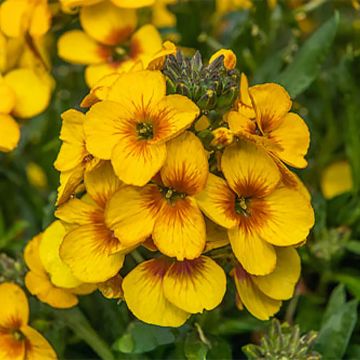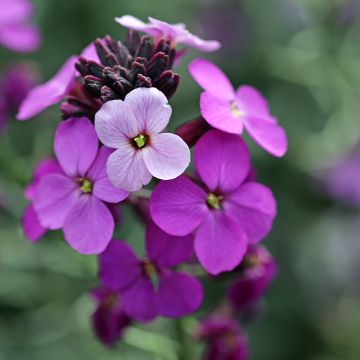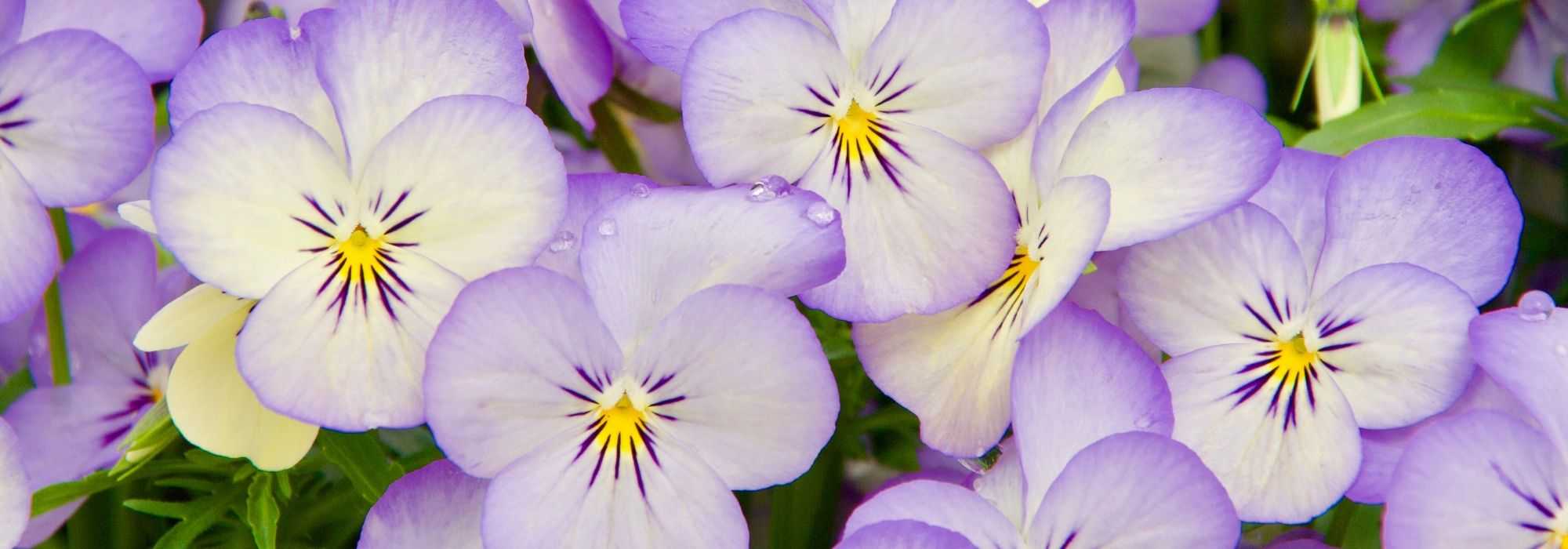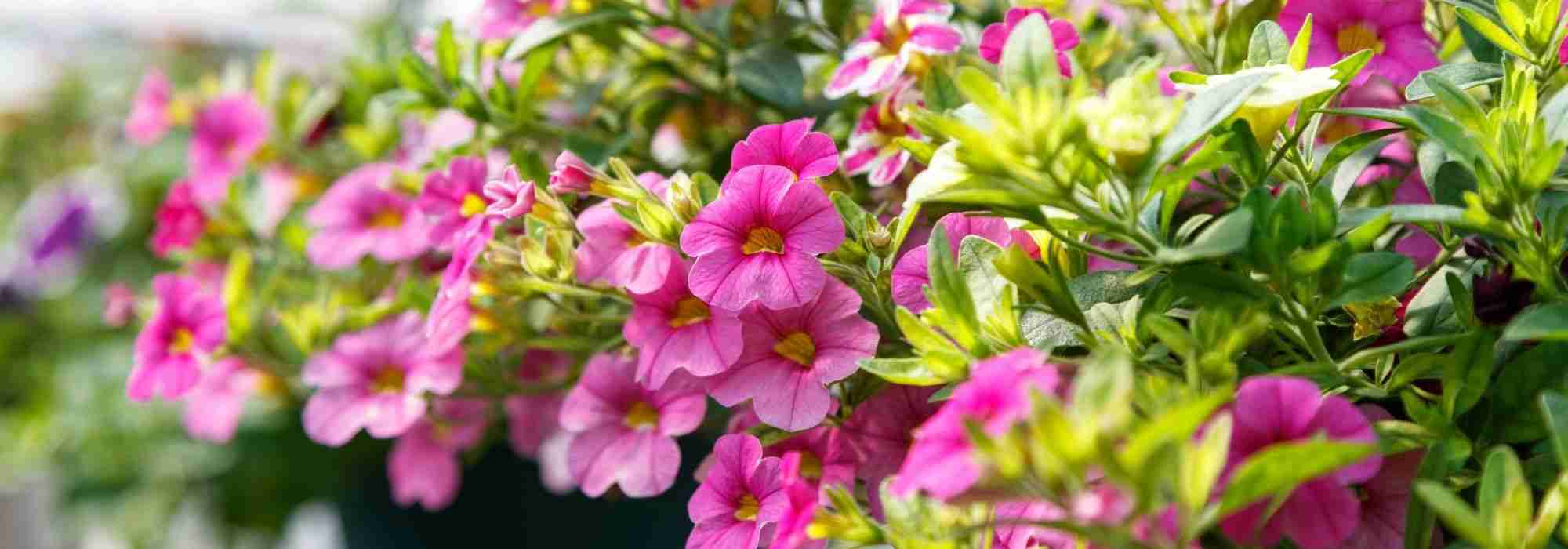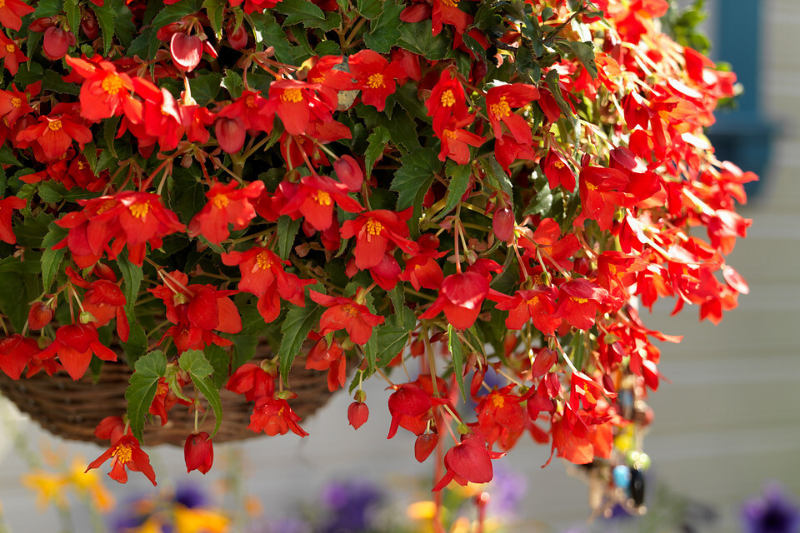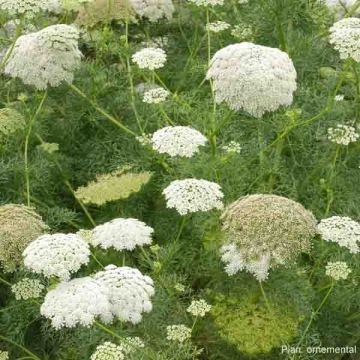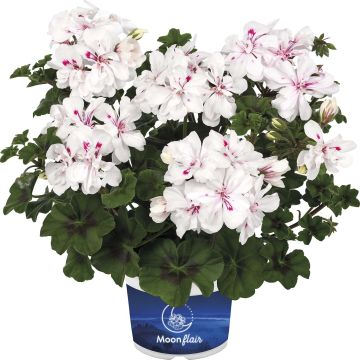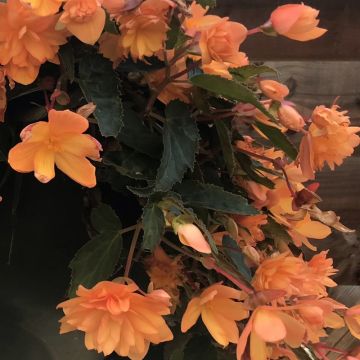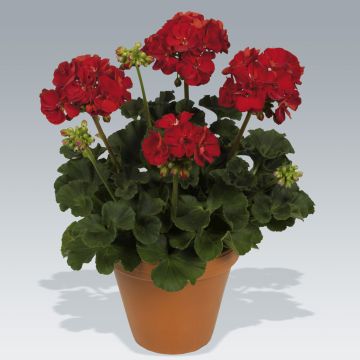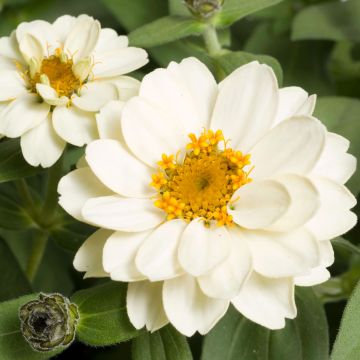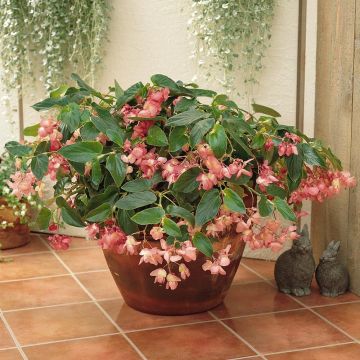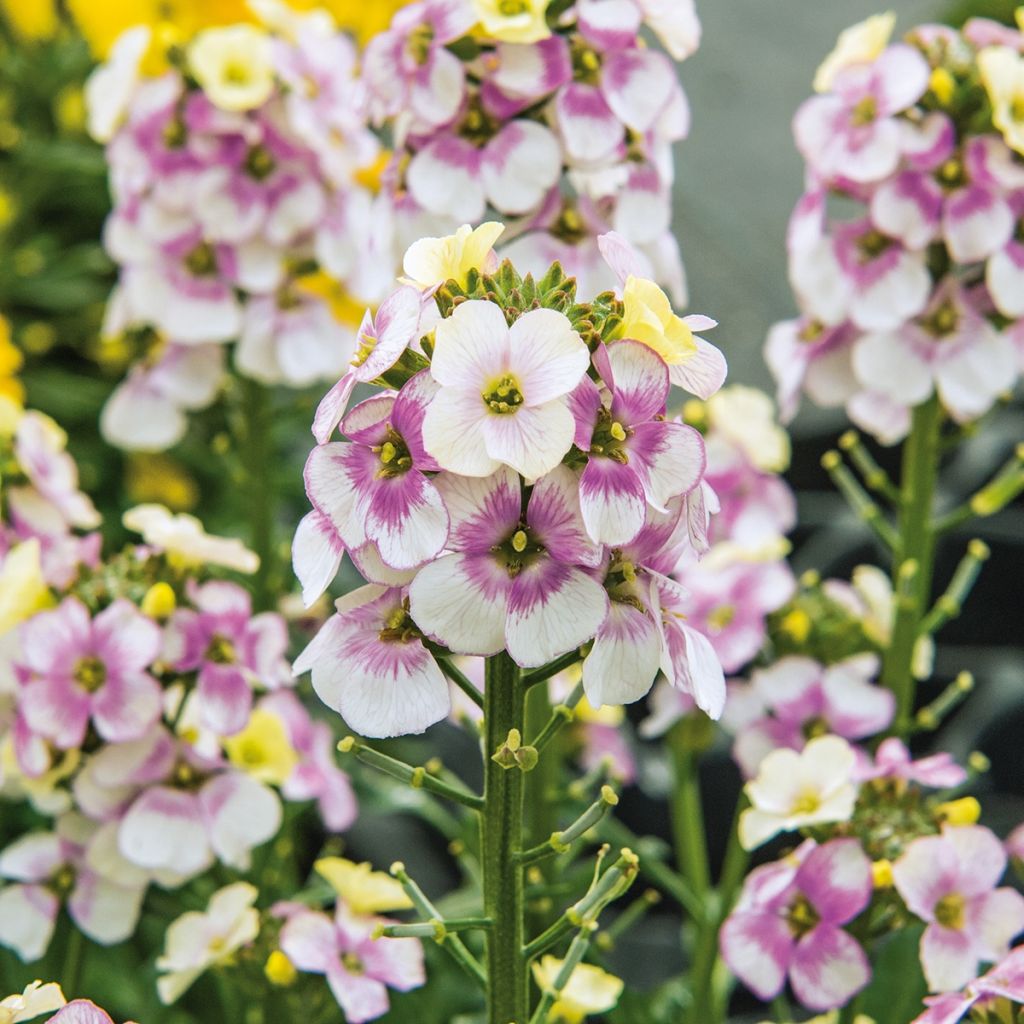

Giroflée vivace - Erysimum Winter Charm
Erysimum Winter Charm - Wallflower
Erysimum x linifolium WINTER Charm
Wallflower, Perennial Wallflower
The plug plants are very well packaged. However, one of them had almost non-existent roots, and a second one looked weak. I planted them immediately (the one in bad condition in a small pot to try to save it), but 1 month later, the second one is still very small and I couldn't save the one with so few roots. I will contact customer service (I had reported the problem over the phone upon receiving them and was told to write about it).
Dominique, 27/12/2023
Special offer!
Receive a €20 voucher for any order over €90 (excluding delivery costs, credit notes, and plastic-free options)!
1- Add your favorite plants to your cart.
2- Once you have reached €90, confirm your order (you can even choose the delivery date!).
3- As soon as your order is shipped, you will receive an email containing your voucher code, valid for 3 months (90 days).
Your voucher is unique and can only be used once, for any order with a minimum value of €20, excluding delivery costs.
Can be combined with other current offers, non-divisible and non-refundable.
Why not try an alternative variety in stock?
View all →This plant carries a 6 months recovery warranty
More information
We guarantee the quality of our plants for a full growing cycle, and will replace at our expense any plant that fails to recover under normal climatic and planting conditions.
Would this plant suit my garden?
Set up your Plantfit profile →
Description
Erysimum 'Winter Charm' is a floriferous and early wallflower whose changing flowers bloom in a delightful palette of pastel shades including mauve, white, and yellow. They bloom for several months from late winter to the doorstep of summer, on a very perennial and hardy plant that can withstand temperatures as low as -7°C (19.4°F). It is so romantic when paired with pansies and red or purple grasses!
Most often native to limestone regions of southern Europe, central Asia, and North America, Erysimum belongs to the Brassicaceae family, just like rapeseed and mustard. These shrubs or short-lived perennials prefer very well-drained, even poor and limestone soils, where they are more long-lasting.
Erysimum 'Winter Charm' is a well-branched small bush, slightly taller than wide, about 40-50 cm (16-20in), with narrow dark green foliage, evergreen in winter. It is ideal in pots, grown as a biennial, for the spring decoration of your containers and flower beds, but will also thrive in the rockery or in well-drained soil and in the sun, where it will live for 3 to 5 years. Its flowering takes place from March to June, or even early July when summer is late to come... The numerous buds give rise to large flowers, twice as wide as those of classic wallflowers, but with the same 4-petal shape typical of the Cruciferous family. Gathered in beautiful spikes, they are pale yellow when they open, gradually turning mauve as they bloom, and then taking on a very pale cream or even white hue, creating a refined and romantic display with pastel shades. A sweet wallflower fragrance spreads in the air in good weather, perfuming a whole area of the garden.
This 'Winter Charm' wallflower is perfect in pots where you can easily meet its water and fertilizer requirements, as it is actually quite demanding... You can associate it with bulbs such as daffodils and jonquils, biennial flowers in pink or red, or even orange, chosen from the range of pansies, primroses, and other violas. Don't hesitate to expand your creative palette with other early perennials (arabis, candytufts, aubrietas, Moroccan marguerites...) and especially with decorative foliage grasses like evergreen sedges. All these combinations will create beautiful spring scenes in flower pots on the patio or balcony. They are also an opportunity to quickly set the scene in a new rockery in the garden.
Note: Please be aware that our young plug plants are professional products intended for experienced gardeners: upon receipt, transplant them as soon as possible, in containers, flower beds, or directly in borders.
Report an error about the product description
Flowering
Foliage
Plant habit
Botanical data
Erysimum
x linifolium
WINTER Charm
Brassicaceae
Wallflower, Perennial Wallflower
Cultivar or hybrid
Planting and care
The plug plants of Erysimum 'Winter Charm' can be planted in pots and containers or directly in the ground in a finely prepared and enriched soil. Plant them as soon as possible after receiving them, in September-October. If the planned location is not yet ready or the conditions are not favourable for planting (heavy rains or excessively dry soil), you can let them grow in pots for 4 to 6 weeks. At planting or shortly after, you should pinch the tip of the plant between your thumb and index finger to remove the terminal bud and stimulate branching. You can repeat this operation until mid-October to obtain denser bushes.
In pots and containers, use a good well-draining potting soil for flowering plants (for example, with plenty of bark or perlite) and enriched with slow-release fertiliser. The top of the plug should be level with the potting soil. Water generously at planting and during the following weeks, as plug plants can dry out quickly. However, be careful with excessive water! Make sure to use containers with drainage holes and empty the saucer beneath it 10 minutes after watering. Remember to water even during winter if it doesn't rain or if the container is placed in a sheltered location. Do not water during freezing periods.
From 3 weeks after planting and until after flowering, apply a liquid feed for flowering plants 1 to 2 times a week with the watering water, even in winter (as long as watering is necessary). The faded spikes can be cut with scissors to maintain a neat appearance for the plant, but this is not essential, as the flowering continues as long as the plant does not lack water. Once the flowering is over, container plants can be replanted in the garden in full sun after being pruned back by about 5 cm (2in).
Planting period
Intended location
Care
Planting & care advice
-
, onOrder confirmed
Reply from on Promesse de fleurs
Similar products
Haven't found what you were looking for?
Hardiness is the lowest winter temperature a plant can endure without suffering serious damage or even dying. However, hardiness is affected by location (a sheltered area, such as a patio), protection (winter cover) and soil type (hardiness is improved by well-drained soil).

Photo Sharing Terms & Conditions
In order to encourage gardeners to interact and share their experiences, Promesse de fleurs offers various media enabling content to be uploaded onto its Site - in particular via the ‘Photo sharing’ module.
The User agrees to refrain from:
- Posting any content that is illegal, prejudicial, insulting, racist, inciteful to hatred, revisionist, contrary to public decency, that infringes on privacy or on the privacy rights of third parties, in particular the publicity rights of persons and goods, intellectual property rights, or the right to privacy.
- Submitting content on behalf of a third party;
- Impersonate the identity of a third party and/or publish any personal information about a third party;
In general, the User undertakes to refrain from any unethical behaviour.
All Content (in particular text, comments, files, images, photos, videos, creative works, etc.), which may be subject to property or intellectual property rights, image or other private rights, shall remain the property of the User, subject to the limited rights granted by the terms of the licence granted by Promesse de fleurs as stated below. Users are at liberty to publish or not to publish such Content on the Site, notably via the ‘Photo Sharing’ facility, and accept that this Content shall be made public and freely accessible, notably on the Internet.
Users further acknowledge, undertake to have ,and guarantee that they hold all necessary rights and permissions to publish such material on the Site, in particular with regard to the legislation in force pertaining to any privacy, property, intellectual property, image, or contractual rights, or rights of any other nature. By publishing such Content on the Site, Users acknowledge accepting full liability as publishers of the Content within the meaning of the law, and grant Promesse de fleurs, free of charge, an inclusive, worldwide licence for the said Content for the entire duration of its publication, including all reproduction, representation, up/downloading, displaying, performing, transmission, and storage rights.
Users also grant permission for their name to be linked to the Content and accept that this link may not always be made available.
By engaging in posting material, Users consent to their Content becoming automatically accessible on the Internet, in particular on other sites and/or blogs and/or web pages of the Promesse de fleurs site, including in particular social pages and the Promesse de fleurs catalogue.
Users may secure the removal of entrusted content free of charge by issuing a simple request via our contact form.
The flowering period indicated on our website applies to countries and regions located in USDA zone 8 (France, the United Kingdom, Ireland, the Netherlands, etc.)
It will vary according to where you live:
- In zones 9 to 10 (Italy, Spain, Greece, etc.), flowering will occur about 2 to 4 weeks earlier.
- In zones 6 to 7 (Germany, Poland, Slovenia, and lower mountainous regions), flowering will be delayed by 2 to 3 weeks.
- In zone 5 (Central Europe, Scandinavia), blooming will be delayed by 3 to 5 weeks.
In temperate climates, pruning of spring-flowering shrubs (forsythia, spireas, etc.) should be done just after flowering.
Pruning of summer-flowering shrubs (Indian Lilac, Perovskia, etc.) can be done in winter or spring.
In cold regions as well as with frost-sensitive plants, avoid pruning too early when severe frosts may still occur.
The planting period indicated on our website applies to countries and regions located in USDA zone 8 (France, United Kingdom, Ireland, Netherlands).
It will vary according to where you live:
- In Mediterranean zones (Marseille, Madrid, Milan, etc.), autumn and winter are the best planting periods.
- In continental zones (Strasbourg, Munich, Vienna, etc.), delay planting by 2 to 3 weeks in spring and bring it forward by 2 to 4 weeks in autumn.
- In mountainous regions (the Alps, Pyrenees, Carpathians, etc.), it is best to plant in late spring (May-June) or late summer (August-September).
The harvesting period indicated on our website applies to countries and regions in USDA zone 8 (France, England, Ireland, the Netherlands).
In colder areas (Scandinavia, Poland, Austria...) fruit and vegetable harvests are likely to be delayed by 3-4 weeks.
In warmer areas (Italy, Spain, Greece, etc.), harvesting will probably take place earlier, depending on weather conditions.
The sowing periods indicated on our website apply to countries and regions within USDA Zone 8 (France, UK, Ireland, Netherlands).
In colder areas (Scandinavia, Poland, Austria...), delay any outdoor sowing by 3-4 weeks, or sow under glass.
In warmer climes (Italy, Spain, Greece, etc.), bring outdoor sowing forward by a few weeks.






























